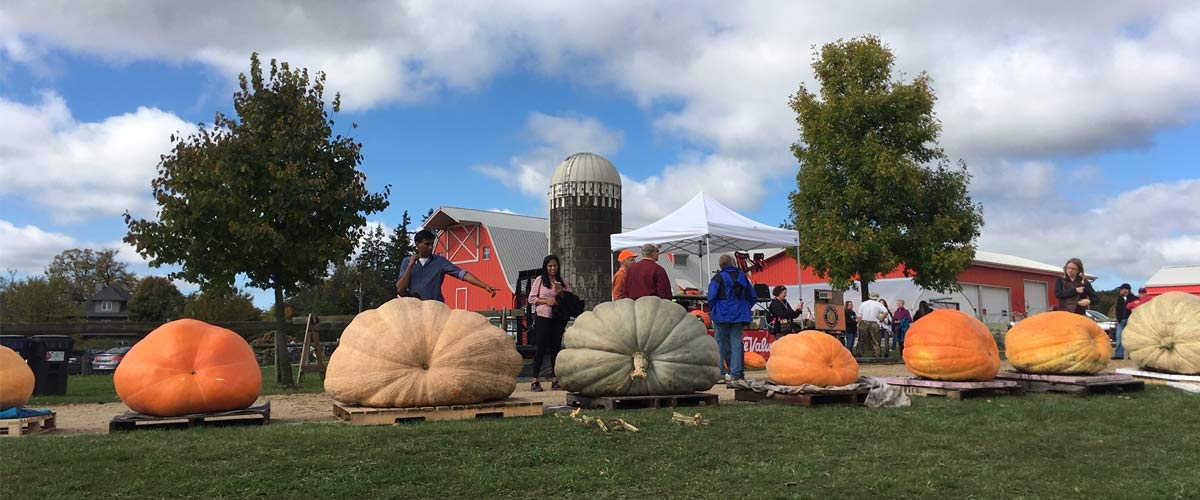
When the leaves start to turn and it’s time for the harvest, our fall traditions have added more and more pumpkin to our lives. From pumpkin pie to pumpkin carving to giant pumpkin contests to the (infamous?) pumpkin spice latte and even pumpkin-flavored wheat ale, this favorite fall crop has a rich history.
One of North America’s First Food Crops
The first pumpkins — believed to come from Central America more than 7,500 years ago — didn’t much resemble the varieties we have today. They had a bitter taste and were much smaller and firmer.
Despite their unappealing flavor, pumpkins were one of the first food crops in North America. Their thick flesh made them perfect for storing during winter and when food was in short supply.
Over the course of centuries, farmers have been breeding squash and pumpkins into tastier varieties that store even longer and produce more bountiful crops.
The First Thanksgiving
During the first Thanksgiving in 1621, the Wampanoag tribe helped the pilgrims survive their first winter in the new world by sharing native foods like gourds.
It is likely that this first Thanksgiving meal didn’t have pumpkin pie, though. Not only did they probably not have wheat for a crust, but they probably didn’t have an oven either, so it was likely a side dish prepared from diced gourds boiled in a pot or roasted on an open fire.
It was only when this new-world crop went back across the pond that it was incorporated into British pie-baking cuisine, which had been producing stuffed pastries for generations.
Carving: From Turnips to Pumpkins
The jack-o’-lantern is said to have originated in the Celtic culture during the festival marking the end of the harvest and the beginning of the dark months. They originally carved turnips to either represent or ward off evil spirits.
When northern Europeans immigrated to North America, turnips were scarce, but they did find an abundance of pumpkins — and a new tradition was born. Pumpkins seem a lot easier to carve than turnips, too!
Competitive Gardening
More recently, we’ve seen the advent of competitive gardening. One of the most prominent forms of which is giant pumpkin contests.
As this international “sport” has taken off in popularity, informal genetic selection has led to an amazing increase in the size of the world-record pumpkin.
In 1996, two growers broke the magical 1,000-pound mark for the first time. And in 2017, the world record was broken (as it has been almost every year since 2000) by a monster gourd from Belgian grower Mathias Willemijns that weighed 2,624.6 pounds!
Pumpkin growing can be a lucrative sport in both prize money and seed sales. Single seeds from a one-ton pumpkin are on sale for $50 online.
See Monstrous Pumpkins in Person
Will the world record be broken in 2019? To see some of these massive squash and get in on the competitive spirit, stop by Celebrate the Harvest on October 5 at Gale Woods Farm. In addition to witnessing a giant pumpkin weigh-off, you can watch sheepherding trials, walk a llama, make a wool craft and more. We hope to see you there!
About the Author

Tim Reese has been the Farm Supervisor at Gale Woods Farm since it opened in 2003. He manages the facility, livestock and gardens at this educational and production farm. While he has been known to don a scarecrow costume and sing a raucous version of Old MacDonald at Halloween events, he believes that food production and farmers have a serious and important role to play in protecting our environment and promoting land stewardship. When not busy at Gale Woods, Tim enjoys cross-country skiing, biking and exploring the natural world with his family.
Why September Is Sweeter at the Farm Market
By: Tim Reese
Early fall is peak harvest time in Minnesota. Learn why some vegetables taste sweeter later in the season, how to store them during winter, and when to stop by Gale Woods Farm in Three Rivers to stock up on the season's bounty.

